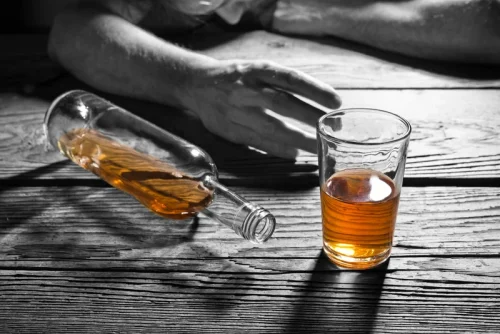
“Kill the Indian in him, and save the man,” said Captain R. H. Pratt, the founder of the Carlisle Indian Industrial School, which like so many other Indian boarding schools, sought to “civilize” Native children. Indigenous children were separated from their families and sent to boarding schools or fostered or adopted out to non-Native families. Later in the 20th century, more sophisticated tools were used to control the population, like contraception and even forced sterilization.
What’s Behind the Myth of Native American Alcoholism?
The discomfort that accompanies the flushing response is credited with fostering lower levels of alcohol abuse in some Asian populations. So far, the evidence seems to indicate that although some proportion of alcoholism risk may be heritable, this trait varies more within population groups than between them. In other words, certain groups may not be more susceptible to alcoholism, but a proportion of persons within groups might be. Furthermore, the search for genetic susceptibility among groups of American Indians may be hampered by the increasing amount of intermarriage and childbearing both within Indian populations and between Indians and non-Indians, thus obscuring any genetic component that might be present (Snipp 1997). At the tertiary level of prevention, the problem condition—alcoholism or severe alcohol misuse—is already present in an individual (see Last, 1988).

THE TREATMENTCHALLENGE
A broader range of both new and old treatment modalities of proven effectiveness should be pursued and their results carefully studied. Evaluation of effectiveness would be particularly important for programs using traditional, culture-based therapies as well as mainstream therapies. As most Indian populations include a variety of individuals with a broad range of both traditional and modern traits, biculturalism and acculturation are important concepts for treatment and research in such programs and for evaluation of the effectiveness of various programs for individual clients.
Treatment for Native Americans Struggling with Alcohol Abuse

Consequently, many low-income AIAN individuals qualify for Medicaid and do not need Purchased Referred Care to cover costs, which may affect assumptions about the role that residence in these areas plays in alcohol-induced deaths. For researchers, clinicians, and policy makers, this study emphasizes the need to understand contemporary social problems such as alcoholism in Native American populations through eachcommunity’s historical, social, and cultural lens. Although there are commonalities that exist with experiences with genocide and colonization, each Native American nation has a unique cultural history that needs to be considered. Additionally, individuals within Native communities have unique perspectives on these issues.
- Many medical model treatments evolved in the contexts of Euro-American, middle-class value structures.
- First, the data presented here describe a pattern that is rather common across the life cycle in many Indian communities.
- It also opens the space to acknowledge the role of alcohol abuse of historical trauma, a subject that is gaining greater attention in mental health care within Indian country.
Consistent with other research (Gordon, 1994; Kinney & Copans, 1989; Thomason, 2000; Thurber & Thomason, 1998), participants reported ineffective and negative experiences with Western treatments and AA because of cultural differences and insensitivity. Many leading researchers and practitioners have recommended that the Native American client’s level of acculturation or identification with traditional tribal values be how long do alcoholics live assessed to determine the goodness of fit for Nativized or syncretic approaches. This small qualitative study suggests something very different in that it was the retraditionalization process itself and exposure to traditional tribal values and healing modalities that were key elements of change. The incorporation of a new aspect of identity as a “traditional” person was key to helping these men achieve sobriety.
Genetic Risk Factors
The authors thank all participants and staff members who participated in this study, the tribal leaders for supporting our research, and Recover Alaska for assisting with recruitment efforts. There are programs and initiatives that provide funding and resources for rural communities to address substance misuse and addiction. American Addiction Centers offers a specialized addiction treatment program for Veterans at several of our facilities. The program helps Veterans recover by utilizing strength-based therapy and evidence-based approaches to support Veterans. These interventions include stress management, treatment for depression and anxiety, anger management, emotion regulation, and more.

“The Poison That Ruined the Nation”: Native American Men—Alcohol, Identity, and Traditional Healing
Consistent with grounded theory approaches, the coding and analytic work occurred alongside the data collection. The participants represented three generations ranging from ages 30 to 68 with widely varying levels of formal education. Two of the men were Elders (men with traditional knowledge, status, and respect in the community) and the remaining seven had varying levels of formal education and cultural knowledge. As data from the Centers for Disease Control and Prevention shows, even before the pandemic, the life expectancy of the American Indian and Alaska Native population was significantly lower than that of other racial or ethnic group in the U.S.
- These data provide insight into these men’s reflections and perceptions about their own recovery process and sobriety.
- With these facts in mind, the question is immediately raised as to why American culture continues to glamorize alcohol, touting its use at important social events and associating it with beautiful models on television.
- Rather, the authors point to association and identification with abusing peer clusters as the most influential factor in causing persistent and serious substance abuse and polysubstance abuse among Indian youths (see also Swaim et al., 1993).
American Indian and Alaska Native communities experience high rates of alcohol-related problems and have responded by implementing prevention and treatment programs, including both grassroots and externally sponsored programs. Perhaps the greatest impetus for change regarding alcohol use in Indian communities has been the revitalization of Indian culture, which began during the 1960s Civil Rights Movement. The Federal Government is gradually reducing its caretaker role, and tribes are assuming greater authority over their own economic, social, educational, and health affairs. Furthermore, awareness is growing that solutions to social and health problems must be generated at the community level and those that have been imposed from outside will most likely be ineffective (Beauvais and LaBoueff 1985; Oetting et al. 1995).
SAMHSA’s Office of Tribal Affairs and Policy
- One key finding from our study that differs from People Awakening (Mohatt et al., 2008) is that the protective nature of cultural engagement was not pronounced in our sample.
- When only these 9 areas are considered, the age-adjusted alcohol-involved death rate among American Indians is 3.2 times that of the general U.S. population.
- A major strength of the article by Spillane et al1 is the location of these trends within the broader national landscape, not just in comparison with white individuals as the primary reference group, which is typically the case.
- Duran and Duran advocate for a “postcolonial history of alcohol” that situates a discussion of alcohol-related problems within a colonial discourse and recognizes the long history of culturally based responses to alcohol abuse within Indian nations.
- Problems with alcohol in Native American communities have been written about since colonial times (Unrau, 1996).
- Overall, the prevalence of an alcohol-related diagnosis among men was double the rate among women, a finding that is common in most surveys of Indian adult populations.